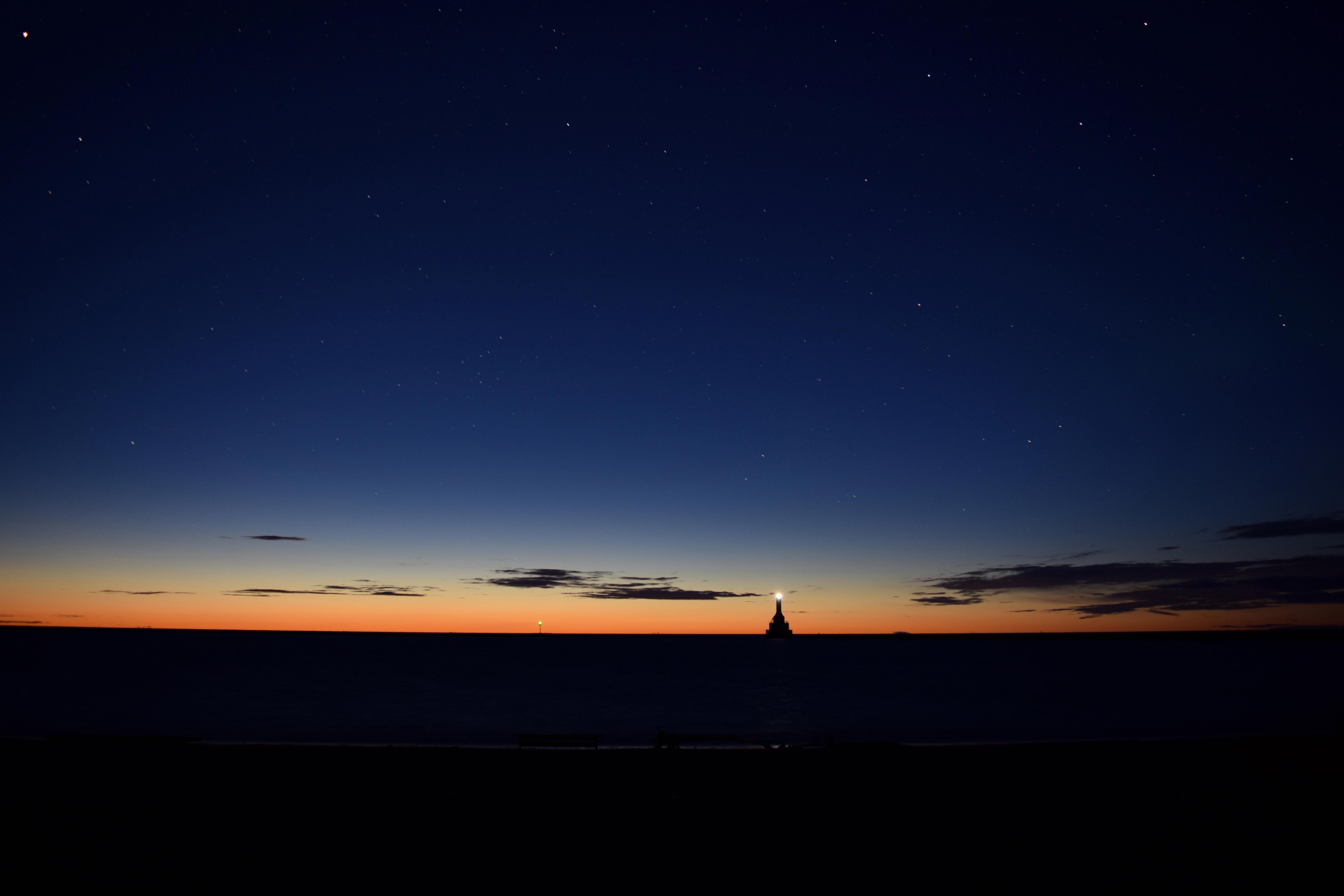Dusk is the period of time between sunset and complete darkness. It is the time just before night when the daylight has almost gone but when it is not completely dark. Although dusk may give the impression of being nighttime, it is not technically considered night time.
Night time is defined as the period of time between sunset and sunrise, when the sun is completely below the horizon. During the night, the sky is completely dark and the stars and moon are visible in the sky. In contrast, during dusk, the sky is stil partially illuminated by the sun, making it brighter than it is during night time.
Dusk is an important time of day, as it marks the transition from day to night. It can be a beautiful time to witness, with the sky taking on a range of vibrant colors, such as red, orange, pink and purple. This is due to the way that the sun’s rays are scattered by the Earth’s atmosphere during this time of day.
While dusk may not be considered night time, it can still be a dangerous time to be out and about. The reduced visibility and changing light conditions can make it difficult to see obstacles, particularly when driving. Additionally, dusk is a prime time for insects, such as mosquitoes, to come out in search of food, which can pose a health risk to humans.
While dusk may give the impression of being night time, it is technically not considered to be. Dusk is an important time of day, marking the transition from day to night, and can be a beautiful time to witness. However, it is important to take precautions during this time of day, as reduced visibility and the presence of insects can pose a risk to human safety.
Is Dusk a Morning or Night Phenomenon?
Dusk is a term that refers to the period of twilight between complete darkness and sunrise (or sunset). It occurs when the disc of the sun completely disappears below the western horizon. Technically, dusk is neither morning nor night, but rather the transition period between them.
During dusk, the sky gradually darkens as the sun sets, and the stars begin to appear. This period of twilight varies in duration depending on the season and geographical location. In general, dusk lasts longer in the summer months and at higher latitudes.
It is worth noting that the term “dusk” is often used interchangeably with “evening” or “nightfall” in common usage. However, strictly speaking, dusk refers specifically to the period of twilight between sunset and complete darkness.
To summarize, dusk is neither morning nor night, but rather a transitional period between the two. It is the period of twilight that occurs after the sun has set and befre complete darkness sets in.

Source: pxhere.com
Exploring the Meaning of ‘Dusk’
Dusk is a period of time that occurs just beore nightfall. During this time, the daylight begins to fade away, and the sky takes on a reddish or orange hue. Despite the decrease in light, it is not yet completely dark during dusk.
It is important to note that “dark” is a relative term, and what one person considers dark may differ from another’s perception. However, generally speaking, dusk is not considered to be completely dark. This is because there is still some light present, even if it is not as bright as during the daytime.
During dusk, objects may become more difficult to see clearly, and colors may appear less vivid. As the daylight continues to fade away, night eventually falls, and the sky becomes darker.
While dusk is a time of decreased light, it is not considered to be completely dark.
The Time Known as Dusk
Dusk is a term used to describe the period of time beween sunset and complete darkness. It is the time when the sky begins to darken as the sun disappears below the horizon. Dusk is also known as twilight and is characterized by a noticeable decrease in the amount of light in the sky. During this time, the sun’s rays are still visible as they scatter in the atmosphere, creating a range of colors from pink and orange to purple and blue.
The duration of dusk varies depending on the time of year and the location. In general, it lasts for about 30 to 60 minutes, but it can be longer in areas closer to the equator or during certain times of the year. As the sun continues to move further below the horizon, the sky will eventually become completely dark, marking the beginning of night.
It is important to note that dusk is different from dawn, which is the period of time just before sunrise when the sky begins to lighten. While both dusk and dawn are transitional periods between day and night, they occur at opposite ends of the day and have their own unique characteristics.
Dusk is the period between sunset and complete darkness, characterized by a noticeable decrease in light and a range of colors in the sky. It lasts for about 30 to 60 minutes and is different from dawn, which is the period just before sunrise.
Conclusion
While dusk is the period of time just before night when the daylight fades away, it is not considered to be nighttime. Nighttime is characterized by complete darkness and the absence of any visible sunlight. However, dusk can often be confused with nighttime due to its low light conditions and the onset of darkness. It is important to note that dusk is a transitional phase between day and night, and is often a beautiful and serene time of day to enjoy the natural beauty of the sky and the world aroud us. So, while dusk may not be considered nighttime, it is still a special and unique time of day that should be appreciated and enjoyed for what it is.
